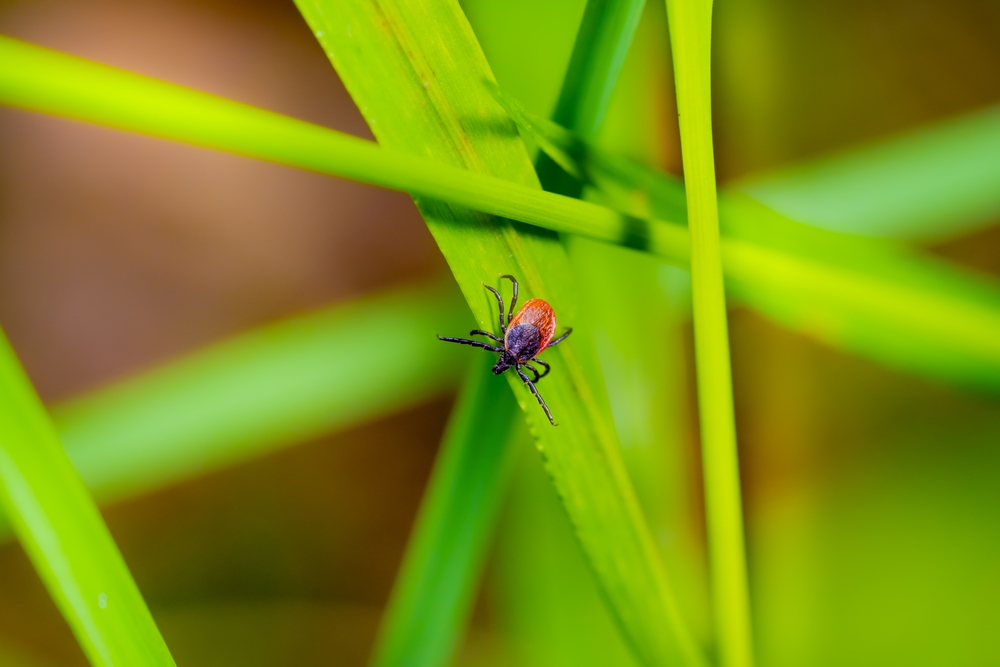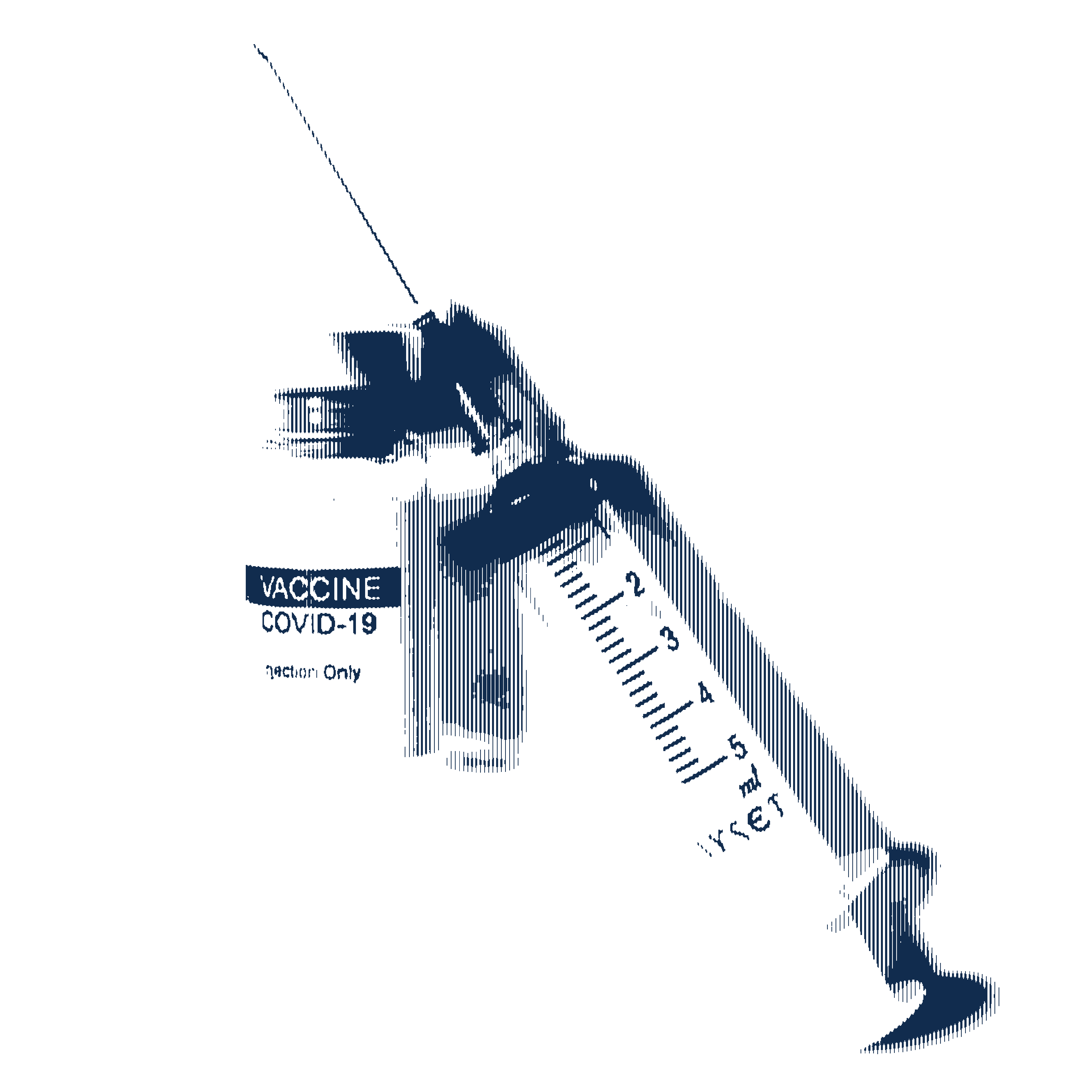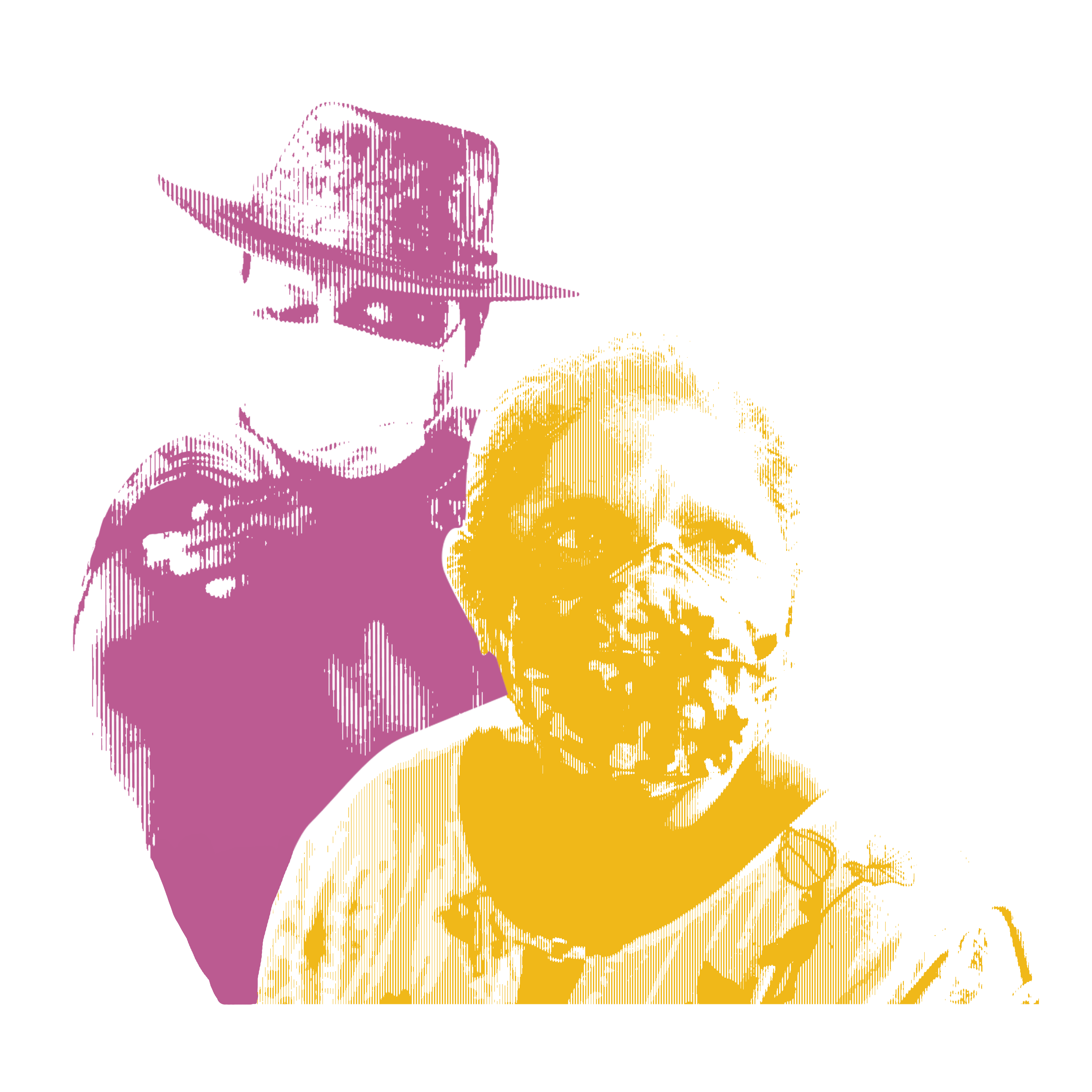Migratory birds efficiently ferry pathogens around the world. As a warming climate reshapes their journeys, infectious disease experts are on guard for new threats to humans
GERMANY, SWEDEN, AND THE NETHERLANDS—One day in May, a team of scientists parked their cars in a German nature park near the Baltic Sea and stared at the top of a 30-meter-tall black poplar tree. They were seeking eagles—and clues to the stream of viruses and other pathogens coursing along Europe’s flyways in the guts of migratory birds. These white-tailed eagles don’t migrate much. But the adults capture and eat birds that do, and feed the prey to their offspring.
It was a month or so into the breeding season, and the scientists hoped to find nestlings—far easier to trap than adult eagles. A local eagle watcher pointed to a nest at the top of the tree. The signs were good. In the distance, a white-tailed eagle soared in the clear sky, and Anne Günther, the veterinarian leading the project, smiled as she pointed to plaques of white goop staining the grass: fresh eagle feces. It was time to take a closer look at the nest.

As a nonprofit journalism organization, we depend on your support to fund more than 170 reporting projects every year on critical global and local issues. Donate any amount today to become a Pulitzer Center Champion and receive exclusive benefits!
Veterinarian Oliver Krone, who is based at the Leibniz Institute for Zoo and Wildlife Research and has studied white-tailed eagles for 23 years, deftly hovered a drone over the nest and saw three eaglets. A tree climber dressed in camouflage slingshotted a rope over a sturdy branch and scurried up it, carrying a sack. Soon the fluffy gray eaglets and the dead prey in the nest had been lowered to the ground. The researchers banded, swabbed, and drew blood from the eaglets, all to be analyzed for pathogens they might have picked up from their migratory prey and for antibodies from their mother, signs of past infections. They also sampled the carcass of a wigeon, a dabbling duck, that was found in the nest.
Ducks and other migratory birds efficiently transport all kinds of microbes around the world, including novel influenza strains that threaten poultry and humans, West Nile virus, and a wide range of bacteria that can sicken people and harbor antimicrobial resistance genes (see sidebar). Günther’s project, which has already detected a devastating bird flu strain in the eagles, is funded by the Versatile Emerging infectious disease Observatory (VEO). A $30 million Europe-wide collaboration, VEO aims to improve the early warning system that tracks key pathogens, potentially thwarting pandemics. “We’re trying to figure out what do hot spots look like for human risk,” says VEO project coordinator Marion Koopmans of the Erasmus Medical Center.
A staggering number of variables influence the risks: bird behavior, the nature of the pathogens, the insects and other vectors that help spread them, and humans’ own habits and effects on the landscape. And as the world warms there’s a new variable to consider, says Martin Beer, a veterinarian at the Friedrich Loeffler Institute (FLI) who is Günther’s Ph.D. supervisor. “Bird migration, breeding, and everything is connected to climate change.”
As birds migrate to feed or breed, rising temperatures and changing moisture patterns are likely to affect where they go, how long they stay, and what pathogens they meet. The VEO group is on particularly high alert for birds that travel through Europe to the Arctic, which is warming faster than any other part of Earth and serves as a mixing pot for many species.
Already climate change is shaping some birds’ journeys. What that implies for the airborne traffic of pathogens, and ultimately the risk to people, remains uncertain, however. “It’s not as simple as when this happens, that will happen,” Koopmans says. But untangling the relationships—and learning what warning signs to watch for—is critical, she adds. “Can we narrow down the multitude of factors that do drive disease emergence to a set of indicators that you can build into a monitoring system?” Koopmans asks. “I’ve spent decades now chasing outbreaks. It’s not good enough. Once it starts spreading, it’s too late.”
THE FIRST STEP is to learn where specific birds go and what they’re carrying. Each morning this spring, a dozen college-age students who live at the Ottenby Bird Observatory in Sweden repeatedly walked around the nature preserve, clapping their hands in unison. What from a distance resembles a New Age ritual serves a most practical function: It compels any nearby birds—in this case small migrants called wheatears—to fly down large funnels so they can be captured for measurements and banding.
The observatory sits at the tip of Öland, an island in the Baltic Sea about 300 kilometers as the wigeon flies from the park in Germany where the white-tailed eagles reside. Each spring and summer, birds arrive in Ottenby’s 340 hectares of lush coastal grassland. For some, it’s a final destination to breed, but for many others it’s a stopover on their way north to breeding grounds in Iceland or the White Sea in Russia. On their way south in the fall, the birds often stop in Ottenby again, before continuing as far as Africa.
During both seasons the birds foul water bodies with the viruses in their guts, infecting other birds that then travel on different flyways. The result is a global relay system for transmission. “You can easily imagine that [wild birds] have the potential to bring new pathogens to new areas,” says ornithologist and microbiologist Jonas Waldenström, who works about a 1-hour drive away at Linnaeus University (LNU) and sometimes collaborates with VEO researchers.
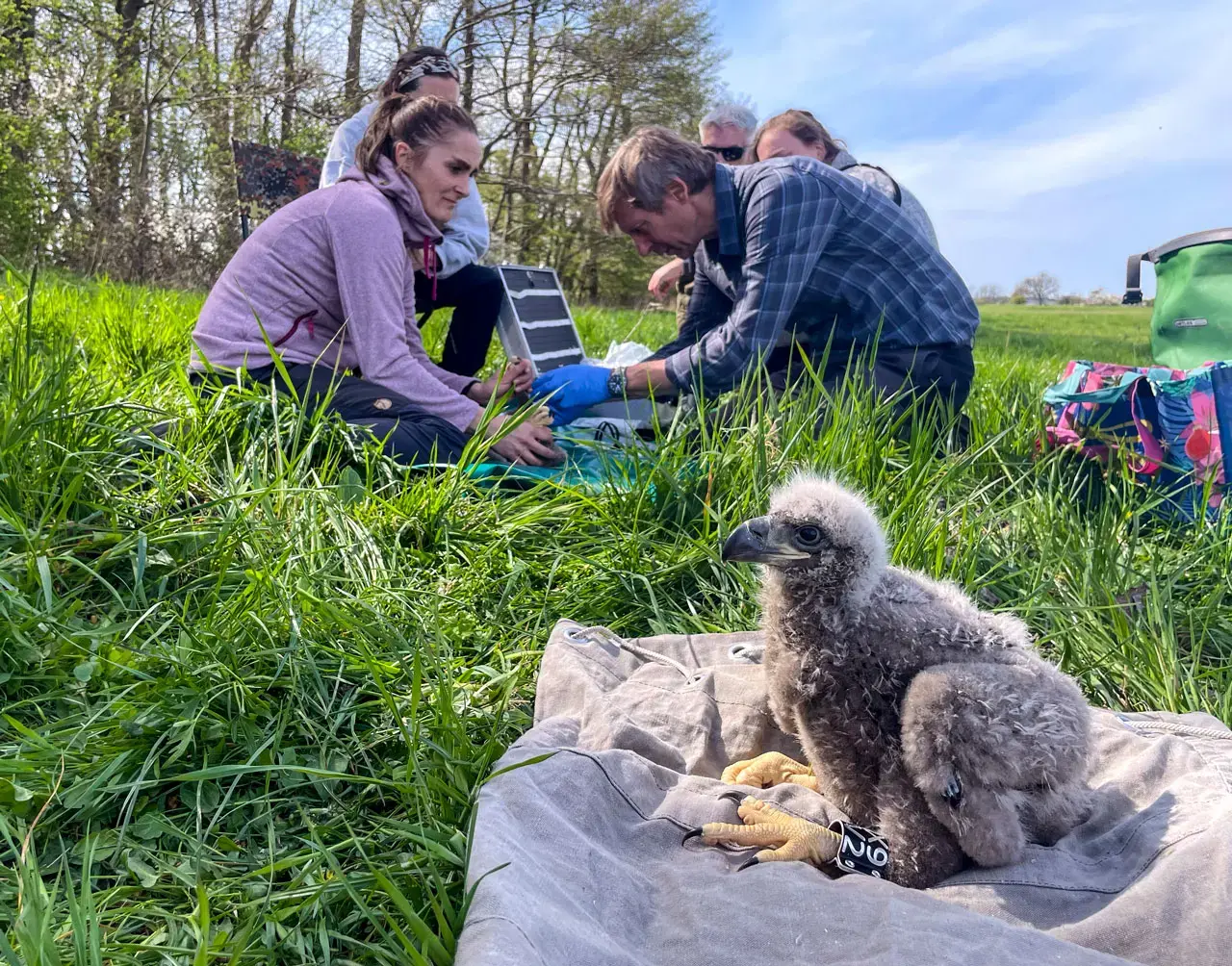
For over 2 decades, Waldenström has sampled more than 100 species of birds at Ottenby. He has found a gallery of pathogens that threaten poultry, humans, or both: influenza and Newcastle disease virus, Campylobacter, Salmonella, Yersinia, tick-borne encephalitis virus, Candidatus, Babesia, Rickettsia, and papillomavirus.
Waldenström and his colleagues have also spotted signs that a warming climate is beginning to affect the birds’ travels. “We are quite poor at remembering how things were 20, 30 years ago, unless we have some notes,” he says, as barnacle geese bark in flight above him. But this observatory has trapped and recorded birds—140 species at current count—for 77 years.
The staff band the animals, trusting that the enormous international community of birders will report where they are spotted next. Birders are obsessive observers. Once you become fascinated with birds, Waldenström says, “in a way you will never be alone again, because there are all these little fluffy dinosaurs around at all times. When people get this disease, there is no real cure for it.” Many share what they find on websites, and the crowdsourced data have traced annual flyways. They are also revealing changes.
A 2006 Science paper Waldenström co-authored analyzed data from 1980 to 2004 to show long-distance passerine birds were arriving earlier in the spring at Ottenby and four other European observatories, likely as a result of climate change. During that period, the spring “green up” came about half a day earlier each year on average, and April and May were typically warmer, likely leading to more of the insects that many of the birds eat. “They’re good heralds of what is going on,” Waldenström says. “We all see that climate change is happening. But long before we started to see and feel these changes, you can see those types of changes in the bird community.”
Waldenström’s team now equips black-headed gulls and mallards with transmitters that cellphone towers and satellites can track. “Bird banding is a rather blunt tool,” he says. “Typically, you only get few recoveries, and in most cases it is just the site of banding and the site of recovery.” The transmitters should give a fuller picture of migration routes and timing—but they cost about $1000 each and are cumbersome, which limits the number and types of birds they can follow. Smaller birds cannot wear the tags at all.
JUST HOW CLIMATE-DRIVEN changes in bird migration affect human, or even avian, disease risk depends on an intricate web of factors. Many long-distance migrants start their journeys in response to signals unaffected by climate, such as changes in daylight or internal cues. Keeping to their traditional timing, they might reach a breeding area when spring is more advanced, encountering a changed ecosystem and, perhaps, different pathogens. Others, responding to temperature and humidity, might speed up their migrations, expending more energy, which might also make them more apt to pick up diseases. “Migration is energetically expensive, and studies show that this suppresses the immune system,” says Mariëlle van Toor, a movement ecologist who works with Waldenström at LNU.
For some birds, climate change might convert what once was a stopover spot into their primary breeding grounds, which could make them more likely to pick up certain pathogens. An evolutionary theory known as the dilution effect holds that a diversity of species, expected at a stopover point, can reduce the ability of a pathogen to spread, because an infected bird is more likely to transmit it to a different species in which it does not thrive. But if large numbers of one species settle in to breed, this safeguard may diminish.
Crowded skies
Many migratory species stop in the coastal meadows around Sweden’s Ottenby Bird Observatory on their annual journeys between Arctic breeding grounds and winter habitat. Banding and tags have traced some species’ routes and revealed early signs of change.
Changing climate could also make some pathogens more dangerous. “If you have globally higher temperatures, it means that certain species are going to migrate less, and then the pathogens that they have become more virulent,” says Thijs Kuiken, a flu and coronavirus specialist at Erasmus who is also a serious birder. The idea is that a highly virulent virus in migratory birds will force infected individuals to lag behind, so they will have fewer opportunities to transmit the infection to others. But if whole flocks begin to stay put, the odds grow that when highly pathogenic variants emerge, they will more easily be able to jump from bird to bird and persist.
Climate change could influence pathogen spread in other ways. Warming could lead to booms in mosquito or tick populations, some of which can spread novel microbes to birds. At birth birds have little immunity, and if they hatch in new locales, they may pick new pathogens and pass them to other populations or species. And climate may directly hamper or aid pathogens, which have preferred temperatures and humidity themselves.
“An inherent problem is so many things change at the same time,” Waldenström says.
RESEARCHERS WIDELY AGREE that the most damaging avian pathogen today, a variant of the influenza virus subtype known as H5N1, emerged because of human actions unrelated to greenhouse emissions. The spread of the virus, which has killed unprecedented numbers of wild birds across the world, devastated some mammal populations, and stoked pandemic fears, “has much more to do with the expansion of the poultry industry,” Kuiken says. Large poultry farms, which can have millions of birds massed together, provide a paradise for viruses to persist and evolve into more deadly variants. Many countries also have lax surveillance and control programs for these highly pathogenic avian influenza viruses. “The virus has been given so much opportunity to spread to wild bird populations from poultry,” Kuiken says.
For researchers worried about other bird-borne pathogens, however, the international effort to document the flu virus’ spread shows the value of surveillance. It mapped in exquisite detail how this nightmarish variant, designated 2.3.4.4b, originated in an outbreak in South Korean poultry in 2014, then made a global journey in migratory birds, spreading through Europe to different flyways—one through the Bering Strait, the other via Iceland—that brought it to both coasts of North America by 2022 and then all the way to Chile.
And although climate change may not have spurred the evolution of the variant, Kuiken expects it will affect where the virus travels in the future and which species of birds suffer the most harm. An ambitious VEO project in remote regions of Greenland this summer found the variant in birds on that fast-warming island, where white-fronted geese that winter in Europe may mix with Canada geese that head south to North America. “What happens in these areas that are undergoing this climate change?” Koopmans asks. “There’s very little knowledge right now.”
Besides tracking bird migrations, VEO researchers are monitoring and modeling other factors that might influence the diseases they carry. Several members of Koopmans’s team are delving into how climate change might affect the Netherlands, much of which is below sea level and prone to flooding. If wetlands expand, will they attract new bird species, which might pick up more tick- and mosquito-borne viruses such as West Nile and spread them to cities? If seas rise and rivers grow more saline, will the salt-sensitive freshwater invertebrates that prey on mosquitoes decline, leading to more insect vectors and more infections in birds? VEO researchers are feeding data from their field studies of waterways and animals into a database to probe for answers.

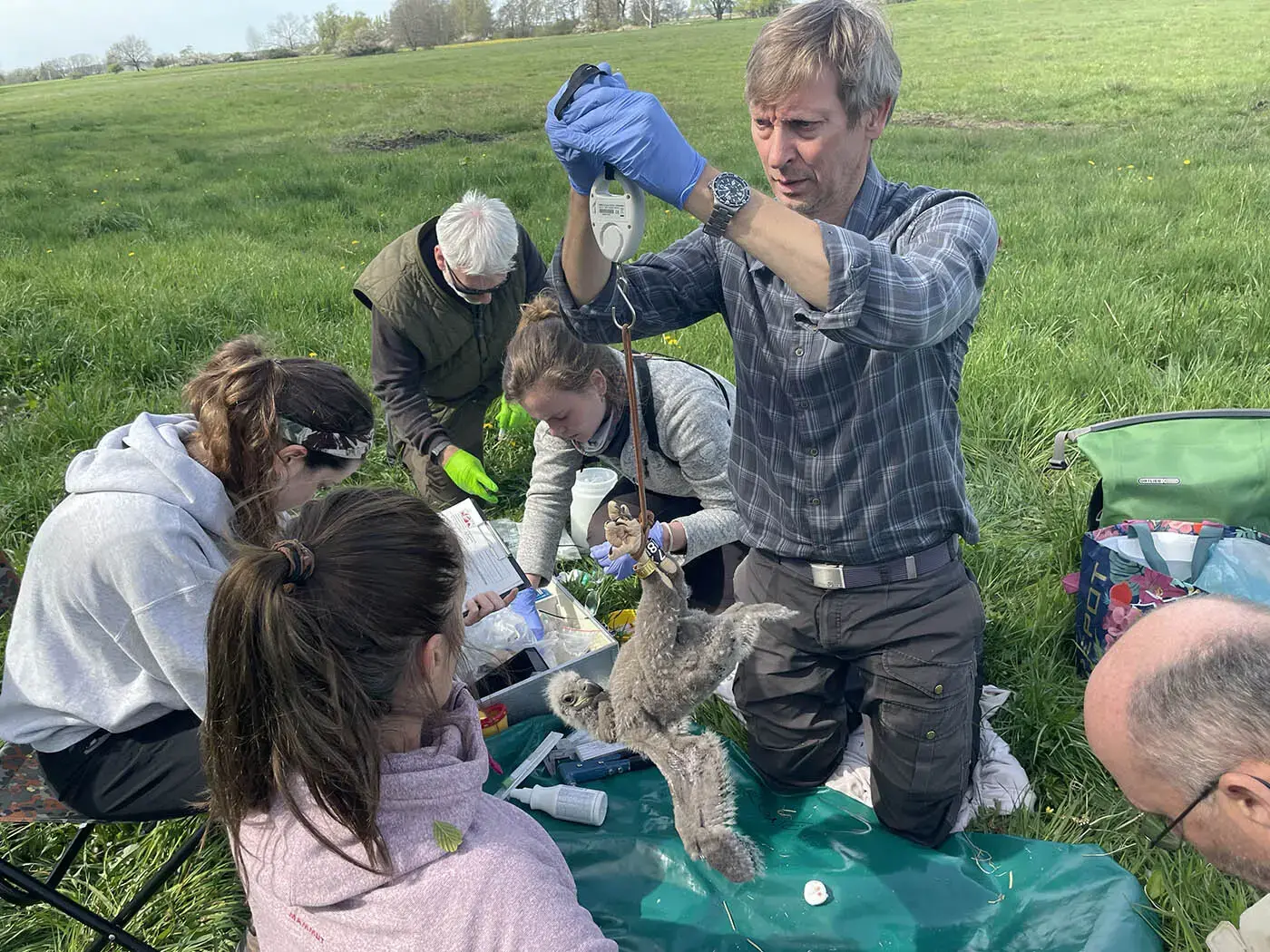
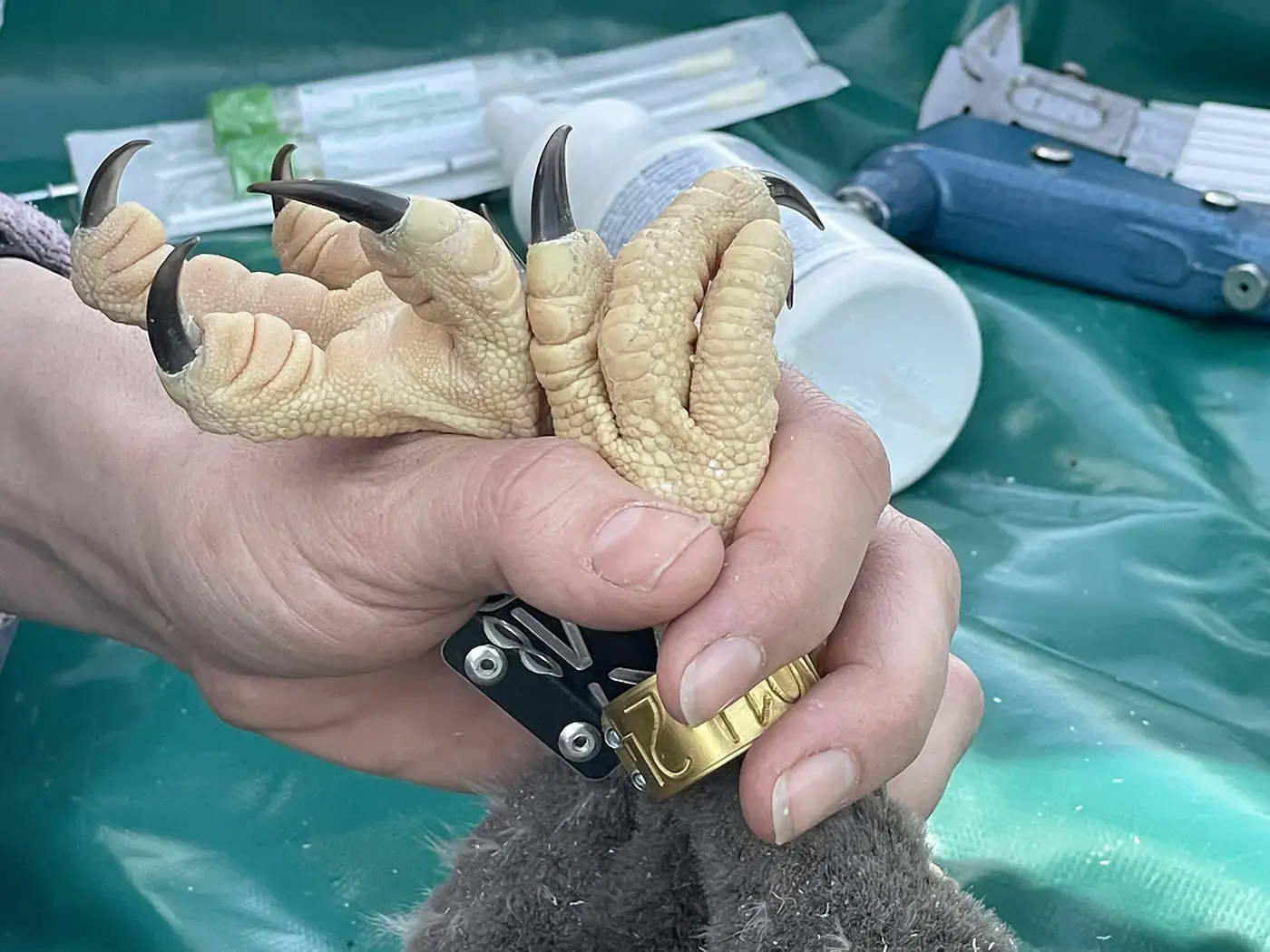
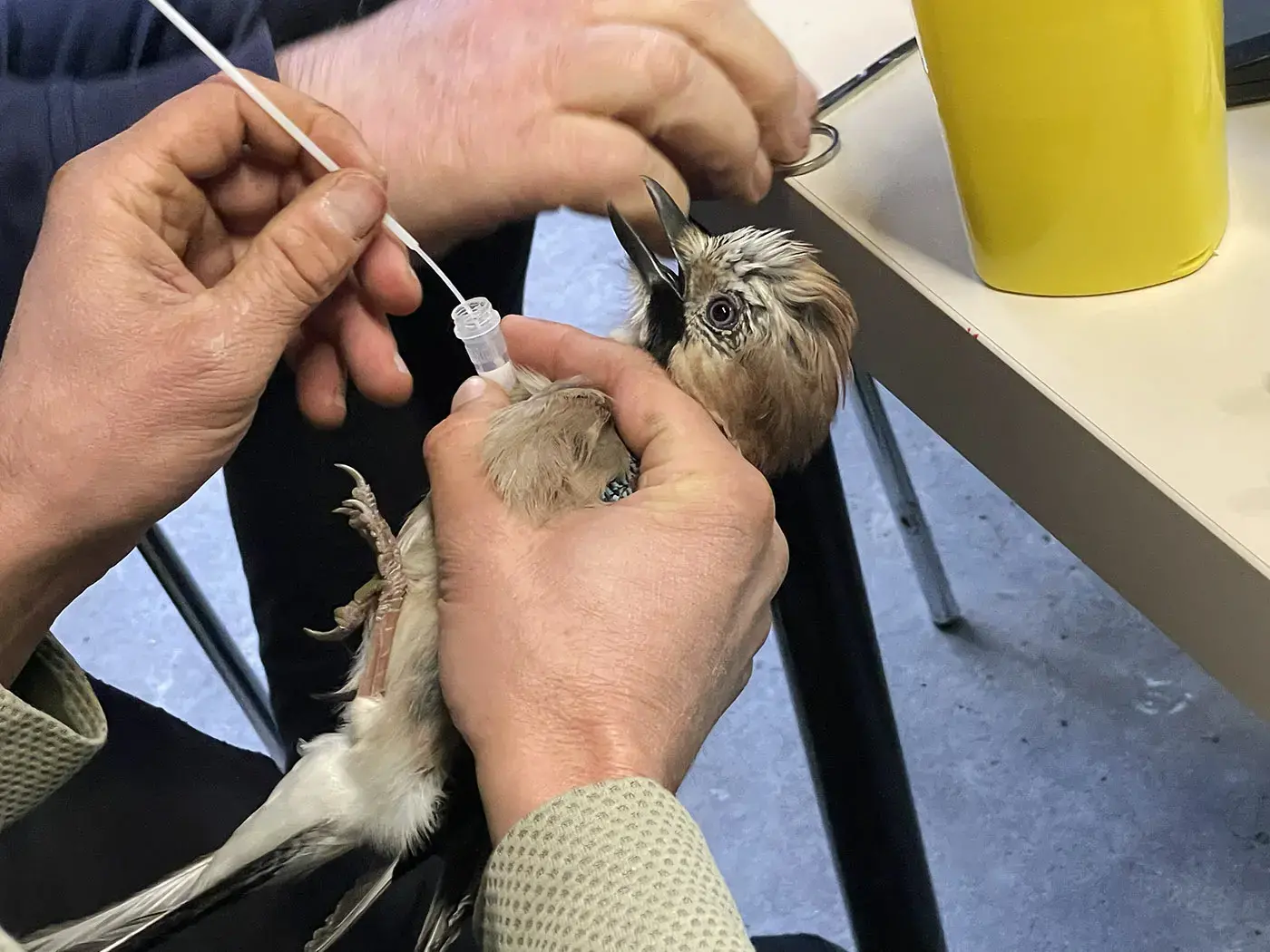
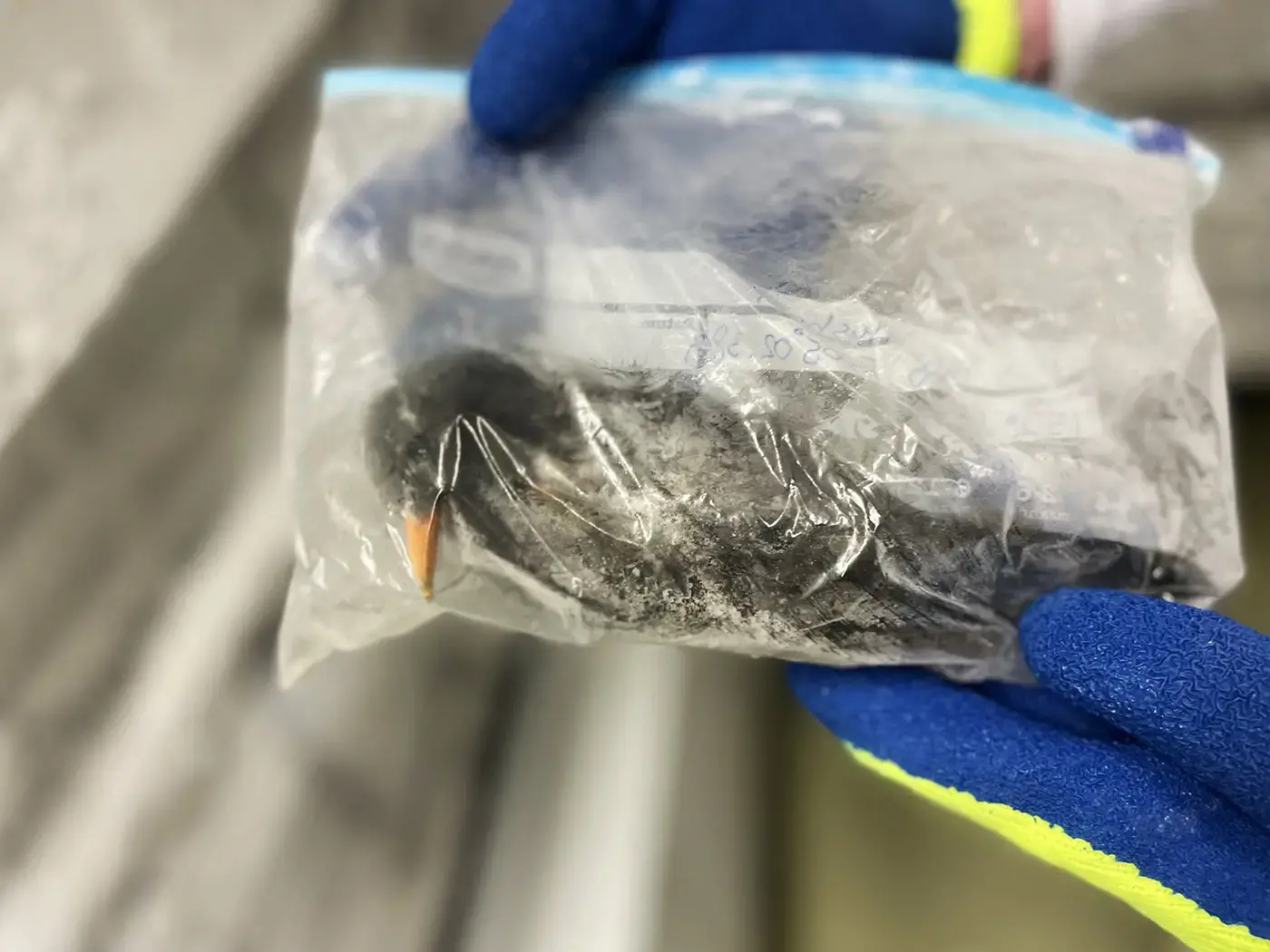
Reina Sikkema, a veterinarian on the Erasmus team who specializes in viral jumps between species, says human attempts to cope with climate change can create new risks. “When you have a drought, people keep their own rain barrels, so you would have more breeding sites for mosquitoes,” which could spread microbes to and from birds, Sikkema says. Many cities are also aggressively planting trees to cool the streets. “Greening our cities is good, but what if that attracts more mosquitoes and creates much higher risks for public health?” she asks.
Similarly, physical oceanographer Julie Pietrzak and her colleagues at the Delft University of Technology, along with Koopmans, are modeling how changes to the country’s elaborate dike system to prepare for rising seas might boost disease risks. Introducing different locks and gates to improve water control could create new wetlands in the Rhine-Meuse delta, altering the gathering places for birds and the prevalence of mosquitoes and other vectors that infect them. “I’d never thought about viruses spreading in the delta and the roles of birds,” Pietrzak says. “As you understand how the complex system works, to a certain level, then you can make better decisions.”
Nnomzie Atama, a veterinarian from the A.P. Leventis Ornithological Research Institute in Nigeria, and other VEO researchers are seeking clues to bird-borne human disease by watching a proxy pathogen. Usutu virus, first found in South Africa in 1959, is related to West Nile virus and is transmitted by the same mosquitoes and the same species of birds. A team including Koopmans first reported the appearance of Usutu in the Netherlands in 2016, when it killed a large number of blackbirds.
Usutu virus rarely causes disease in humans, but the first Dutch case of West Nile was in 2020. The VEO researchers hope Usutu can give them a jump on what West Nile might do next. They have been aggressively monitoring for Usutu by testing trapped birds, shed feathers (which have microscopic drops of blood on the shaft), and dead birds that come to the lab. “There hasn’t been much study done of Usutu, so we’re trying to cover the gap,” says Atama, who is working on his Ph.D. at Erasmus.
If Usutu becomes more prevalent with climate change, it could provide warnings far beyond the Netherlands, and for viruses other than West Nile. “You might also get the introduction of more exotic arboviruses like Dengue,” says Bas Oude Munnink, a molecular virologist at Erasmus. Alerted by Usutu, “We potentially can try to slow down, or perhaps even stop, the spread” of its deadlier relatives.
STANDING IN THE WAY of these plans are not just the dauntingly complex interactions of birds, microbes, and climate, but also mundane challenges. On their May outing, Günther and her German colleagues managed to retrieve and sample just six eaglets. A 3-week Greenland expedition in July sampled 85 geese, which averages out to about four per day invested. At FLI, which has long focused on farm animal health, “I see other Ph.D. students who come back from the pig stables with 200 samples at once, and I’m like, ‘Well, I got two today,’” Günther says. Wild birds are simply difficult to monitor for pathogens.
The long-term studies needed to discern trends are also expensive. “In order to know what’s new and novel you need to know what is normal,” Waldenström says. “But the funding cycle that researchers experience is not really good for long-term monitoring and surveillance.” Trapping birds and collecting samples requires large teams, and then there’s the cost of analyzing the material. Waldenström’s freezers have 60,000 bird samples collected over the past 25 years, the vast majority untested. “We have a shitload of samples lying in our freezers,” he says. “It’s like a biobank of bird viromes.”
But climate change makes such studies that much more urgent, Koopmans says. The ultimate goal is to predict, with the precision of weather forecasting, where spillovers from birds to people are most likely to occur. “It ain’t easy,” Koopmans says. “But I’m convinced we have to start embracing the complexity.”


